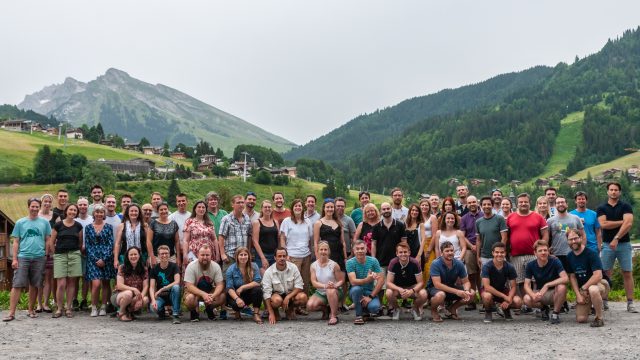5 predictions for UK energy in 2016
Published January 2016
New Everoze Partner Fliss Jones reveals our speculations for the year ahead.
“It’s tough to make predictions, especially about the future” – Yogi Berra.
Making predictions – it’s rarely wise, but always fun! Here are Everoze’s bets for the UK electricity sector this year, with a few wildcards thrown in at the end for good measure…
1. Crowdfunding buzz continues for demand response and storage – but not renewables
2015 saw crowdfunders take a punt on new entrants in demand response and storage: demand flexibility enabler Tempus Energy smashed its £500,000 crowdfunding goal, whilst Tesla-challenger Powervault raised £700,000 in under four days. Expect this buzz to continue through 2016 as investors are drawn to start-ups offering solutions to the challenge of variable renewables generation.
Meanwhile, UK-based FinTech[1] for renewables will face leaner times, because policy changes will limit market volume, and the comparatively low risk/reward profile of this more mature sector lacks the sizzle-factor of storage. Crowdfunding platform the Trillion Fund has already announced that it has no plans to offer new renewable energy loans, focusing instead on other sectors. Of course, a tough home market won’t stop UK-based entrepreneurs scaling up new renewables models abroad – such as global matching platform Megawatt-X and aspiring peer-to-peer lending platform The Sun Exchange.
2. Solar sector seeks salvation in storage – but with no easy answers
2015 saw a flurry of activity in energy storage, as the technology soared to the top of the Gartner hype cycle[2]. Bracing itself for painful subsidy cuts, the solar sector had hoped that its PV development expertise could be transferred to storage. But, as interest turns to analytical investigation, 2016 will be the year of dawning realisation that storage is fiendishly complex.
Deployment through 2016 will surely increase, and may yet dodge the “trough of disillusionment” predicted by Gartner’s theory. But progress will almost certainly fall short of today’s feverish expectations. Instead, this will be a year of laborious modelling, research and lobbying to help pin down the value proposition, given the multitude of possible services and fuzzy regulation.
3. Wind industry focuses on end of life decisions – not development
After a year of desperate lobbying to defend the wind development market, onshore wind developers will see policy-induced boom then bust. Reluctantly accepting a shrunken market for new projects, focus will shift to efficient asset management. With wind projects from the ‘90s reaching the end of their design lives, the big question will be: repower, extend project life or decommission? There will be no ‘one-size-fits-all’ answer, with economic, commercial, financial, regulatory and technical drivers being analysed to reach a case-by-case, risk informed assessment (we’ll be blogging about this soon).
Longer term, hope for new wind projects will slowly return. A strong £/€ exchange rate may push UK onshore wind closer to unity with gas, whilst also significantly pushing upwards the value of CfD projects to be constructed in the UK in 2016/17. Prospects for offshore wind will be rosier than onshore, with over 3GW of UK offshore projects expected to reach financial close, and the next CfD auction for at least a 1GW of capacity kicking off by year end.
4. Demand response finally takes off due to technology developments – not policy
2016 will be the year when demand response aggregation finally gains momentum. The primary driver will not be National Grid’s Power Responsive initiative, or even the follow-on from the EC’s energy market’s consultation last year – though both are welcome.
Instead, the catalyst will be private sector innovation. Big data and analytics-driven forecasting and the Internet of Things will prove to be more than just technology buzzwords. At the same time, demand response aggregators will sharpen up their commercial offering, employing savvy Product Managers to turn an acronym heavy ‘soup’ of incentives (STOR, FFR, DSB, DUOs etc) into a coherent offering for mid to large business customers. Newer entrants such as Limejump will show that the line between energy supplier and aggregator is increasingly arbitrary.
5. Wave & tidal energy seeks life support from EU blue economy – not green energy
After two years of painful private sector bankruptcies and divestments, Westminster and Holyrood funding for wave and tidal energy will dry up. Forced to think outside the box for support, in 2016 the fledging sector will look beyond green energy and towards the European Commission’s overlooked « blue economy » initiative, which supports sustainable growth in seas and oceans.
In this strategic repivot, wave and tidal energy will not be considered in the context of renewables, but rather alongside aquaculture, coastal tourism and marine bio-tech. This may take off the pressure for ocean energy to show a competitive levelised cost with wind and solar for the time being, if it can instead prove job creation and economic growth potential in Europe’s waters.
And maybe, just maybe in 2016 or beyond…
- The Hinkley Point C nuclear deal falls through.
- The UK votes to leave the EU – discarding its 2020 energy targets in the process.
- Heavy investment by Google in Makani energy kites results in a technological breakthrough, meaning that high altitude wind is no longer pie in the sky.
But who knows…?
Of course, these are just a handful of predictions and there are other high profile companies and entrepreneurs with exciting business models that could take the industry by storm.
Refs:
[1] Financial Technology
[2] The Gartner Hype Cycle provides a graphic representation of the maturity and adoption of technologies and applications, and how they are potentially relevant to solving real business problems and exploiting new opportunities.






